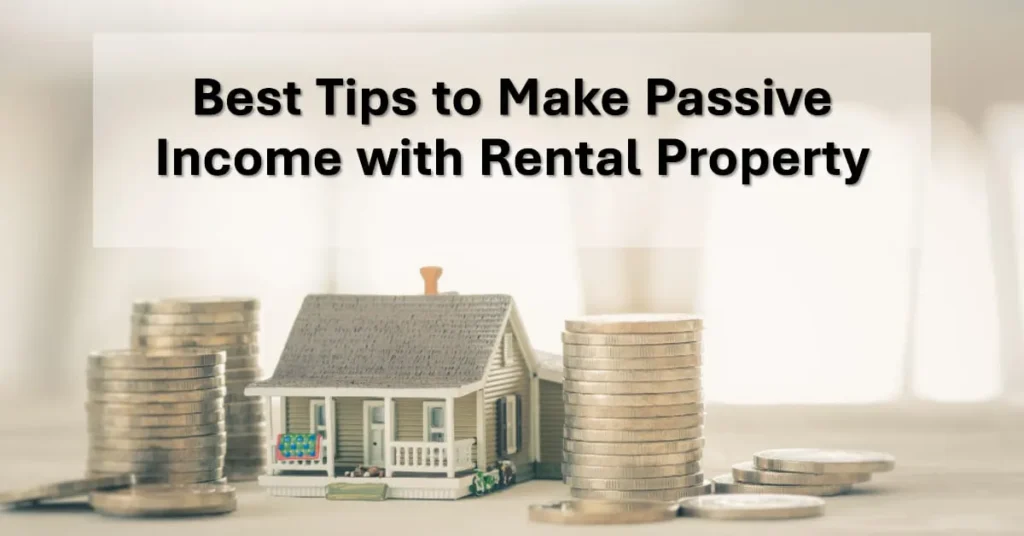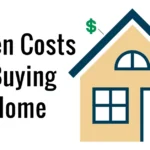Passive income is one of the most sought-after financial goals today, and rental properties have long been a reliable way to build wealth while generating recurring income. Unlike more volatile investments, real estate offers the dual benefit of monthly cash flow and long-term appreciation, making it a cornerstone of many successful investors’ portfolios.
But how exactly can you make passive income through rental properties? And what steps should you take to ensure your real estate investment pays off instead of becoming a financial burden? This comprehensive guide will walk you through everything you need to know in 2025.
What Is Passive Income in Real Estate?
Passive income in real estate refers to money you earn from rental properties without actively working every day. Unlike a traditional job, your investment generates recurring revenue as tenants pay rent.
However, “passive” doesn’t mean completely effortless — at least not at the beginning. Investors must research markets, secure financing, manage properties, and deal with tenants. Over time, though, systems like hiring property managers and automating rent collection can make the income nearly hands-off.
Why Choose Rental Properties for Passive Income?
- Steady Cash Flow – Monthly rent payments provide predictable income.
- Appreciation – Properties often gain value over time, boosting your wealth.
- Tax Benefits – Deductions on mortgage interest, repairs, depreciation, and property taxes.
- Hedge Against Inflation – As prices rise, so does rental income.
- Leverage – You can use a mortgage to control a valuable asset with less upfront cash.
Step 1: Choose the Right Rental Strategy
There are several ways to generate passive income through rental properties. Each has different requirements, risks, and levels of involvement.
1. Long-Term Rentals
Traditional leases (usually 12 months or more). Tenants provide consistent income.
- Pros: Stable income, fewer tenant turnovers.
- Cons: Lower rental rates than short-term rentals.
2. Short-Term Rentals (Airbnb, VRBO)
Properties rented out daily or weekly to travelers.
- Pros: Higher income potential, flexibility in personal use.
- Cons: More management, local regulations, higher wear and tear.
3. Multi-Family Properties
Owning duplexes, triplexes, or apartment buildings.
- Pros: Multiple income streams, economies of scale.
- Cons: Higher purchase cost, more tenant management.
4. Commercial Rentals
Renting office, retail, or warehouse spaces.
- Pros: Long leases, higher rental income.
- Cons: Larger capital requirement, vacancy risk.
5. House Hacking
Live in one unit of a multi-family property and rent out the others.
- Pros: Reduces personal housing costs, easier for beginners.
- Cons: Living alongside tenants can be challenging.
Step 2: Research the Market
Location is the single most important factor in real estate investing. The wrong market can destroy your returns, while the right one can secure passive income for decades.
Key Things to Research:
- Job growth and local economy.
- Population growth (more demand for housing).
- Rental demand vs. supply.
- Property taxes and regulations.
- Neighborhood safety and amenities.
Tip: Look for cities with universities, hospitals, or major employers that create steady tenant demand.
Step 3: Calculate the Numbers
Before buying, run the math to ensure the property generates positive cash flow.
Common Metrics:
- Cash Flow = Rental Income – Expenses
- Cap Rate = Net Operating Income ÷ Purchase Price
- Cash on Cash Return = Annual Cash Flow ÷ Cash Invested
Example:
If you buy a property for $200,000 with a $40,000 down payment and it generates $1,800/month rent with $1,200 expenses, your cash flow is $600/month ($7,200/year). Your cash on cash return is 18% ($7,200 ÷ $40,000) — an excellent return.
Step 4: Secure Financing
Not everyone has enough cash to buy properties outright. Financing options include:
- Conventional mortgages (best rates if you qualify).
- FHA loans (for owner-occupied house hacking).
- Portfolio loans (for multiple properties).
- Private lenders or hard money loans (faster but more expensive).
The goal is to use leverage wisely, ensuring rental income exceeds mortgage payments and other costs.
Step 5: Manage the Property
Property management is where many investors struggle. If you want passive income, consider outsourcing management to professionals.
Self-Managing: Saves money but requires time for tenant screening, rent collection, and repairs.
Property Managers: Charge 8–12% of monthly rent, but make the investment nearly passive.
Step 6: Maximize Rental Income
Boost your passive income by:
- Upgrading appliances and finishes.
- Allowing pets (with deposits).
- Offering furnished rentals for higher rent.
- Adding amenities like parking, storage, or laundry.
- Raising rent gradually to match market trends.
Step 7: Protect Your Investment
- Insurance: Homeowners or landlord insurance.
- Legal Structure: Consider an LLC for liability protection.
- Emergency Fund: Set aside 3–6 months of expenses.
- Regular Maintenance: Prevent small problems from becoming expensive disasters.
Common Mistakes to Avoid
- Overestimating rental income.
- Underestimating expenses (maintenance, vacancies, repairs).
- Ignoring local laws and tenant rights.
- Buying in poor locations just because the property is cheap.
- Treating rental properties as completely passive from day one.
FAQs: Passive Income Through Rental Properties
1. How much money do I need to start investing in rental properties?
It depends on location. With FHA loans, you might start with as little as 3.5% down. In other markets, expect at least 20% down.
2. Is owning rental property truly passive?
Not initially. It becomes more passive once you hire property managers and automate systems.
3. Are short-term rentals more profitable than long-term rentals?
Yes, but they also come with higher risks, local restrictions, and management responsibilities.
4. How do I handle bad tenants?
Tenant screening, clear lease agreements, and legal eviction processes help protect your investment.
5. What’s better: buying one large property or several smaller ones?
Smaller properties diversify risk, while larger properties can scale income. It depends on your goals and budget.
Conclusion
Making passive income through rental properties is one of the most powerful wealth-building strategies available. By choosing the right rental strategy, researching markets, running the numbers, and managing effectively, you can create a steady cash flow stream while building long-term equity.
While it requires planning, effort, and patience, rental properties remain one of the most accessible ways to achieve financial independence in 2025 and beyond.


